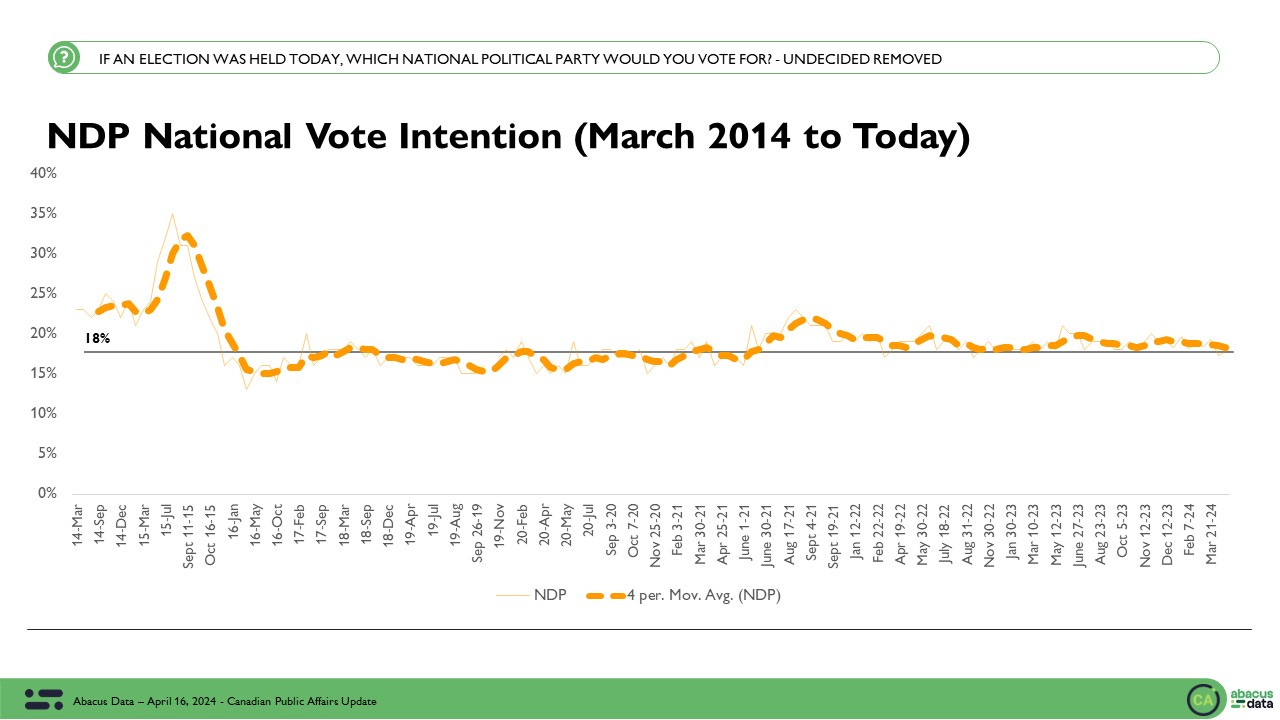Doomed or Ready to Bloom: What the data tells us about Canada's NDP
How does NDP polling today compare to 18-months or so out from the 2021 and 2019 elections?
As another election cycle looms on the horizon, the New Democratic Party (NDP) of Canada finds itself at a crossroads.
This week, I joined Althia Raj’s Toronto Star podcast - It’s Political - to talk about where the NDP finds itself today.
With the announcement that several long-time incumbent MPs are not running again, and a political landscape that sees the Liberals dropping in support without a corresponding gain for the NDP, questions about the future and effectiveness of the party are more relevant than ever. The key question on everyone’s mind: Can the NDP breakthrough in the next election, or is it doomed to remain in its current state?
Analyzing the NDP's Current Position
The NDP's position in Canadian politics today, compared to the periods just before the 2019 and 2021 elections, reveals some intriguing insights.
Despite a lower positive impression of NDP leader Jagmeet Singh and a drop in committed vote share from 20% in February 2020 to 18% today, the party's accessible voter pool is 40%. This is down from those previous periods but now higher than the Liberal accessible voter pool (measured recently at 37%).
In historical context, today's NDP is performing within its usual range. Since 1958, the average NDP vote share in national elections has hovered between 16.4% to 19.4%, with today's polling average at 18% according to @338Canada. Historically speaking, Jagmeet Singh and the NDP are doing no better or worse than we might expect them to.
Even if we go back to March 2014 in Abacus Data’s tracking polls, we find remarkable consistency in the NDP’s vote share.
The Potential for a Breakthrough
But with 4 in 10 Canadians open voting for the NDP, there is clear room to grow.



